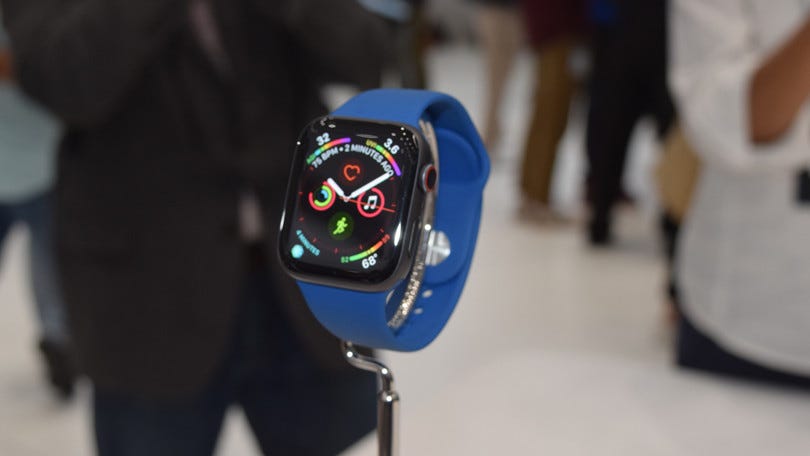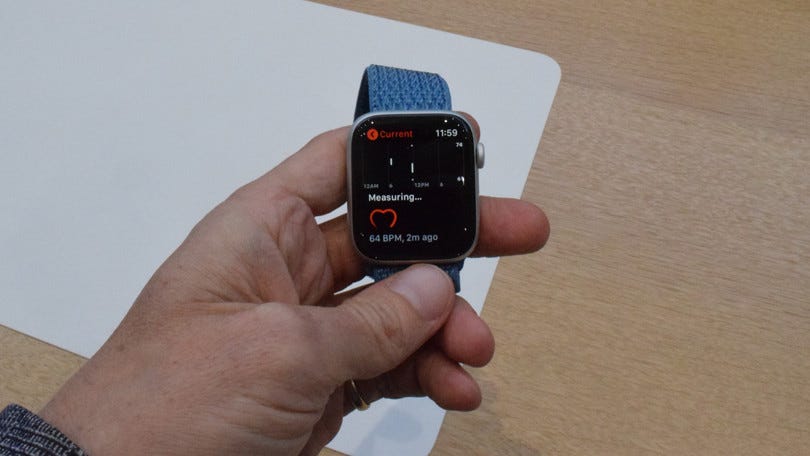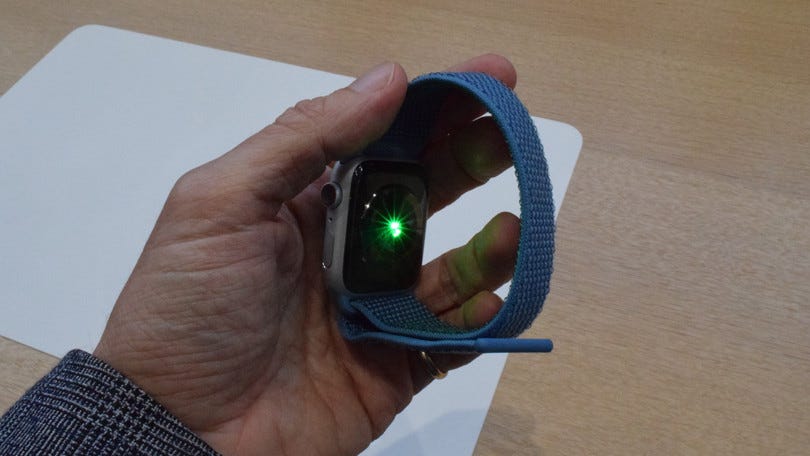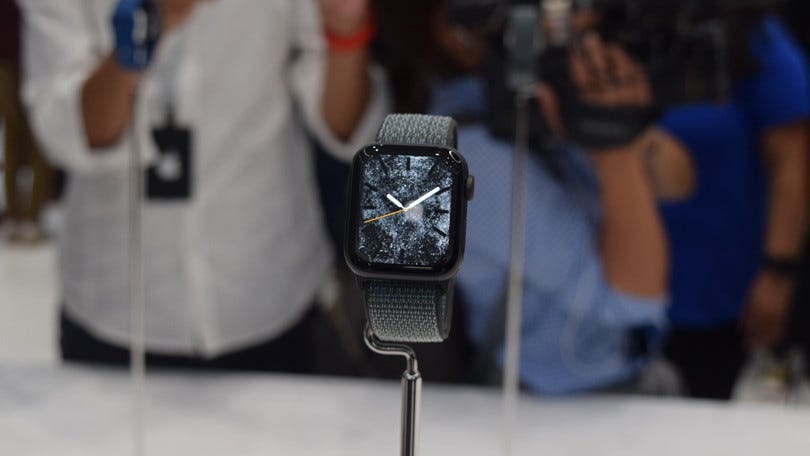Hands On With the Apple Watch Series 4
Hands On With the Apple Watch Series 4


The Apple Watch Series 4 is slimmer, lighter, and faster than previous models, with a focus on health tracking including fall detection and an FDA-approved electrocardiogram (ECG) function.By Sascha Segan
Apple’s new smartwatch is bigger and better than it used to be — but it’s still a delicate flower compared with some of its competitors. The $399 Apple Watch Series 4 ($479 with cellular) is a major upgrade to the company’s wearable: It’s slimmer, lighter, faster, and has better health tracking abilities, including a unique electrocardiogram function. I got a brief wrists-on at Apple’s launch event earlier this week (where it also announced the
The first thing I noticed about the new watch is that the 38mm and 42mm sizes have been bumped up to 40mm and 44mm, using the same bands. That allows for a 32 to 35 percent larger screen, and that makes watch apps look and feel noticeably less cramped — you get more text and more maps on the screen.


But the watch still doesn’t feel big, like the gigantic Samsung Gear S3 and various Google Wear watches do. The aluminum model, which is the base unit, feels like it’s made from a very soft, light material. It’s effortless on the wrist, although I’m a bit concerned about durability. (Apple says it’s durable, of course.) It’s not clunky at all. The company is offering stainless-steel models, too, that feel more solid.
The digital crown, the knob on the side of the watch, now has a sort of haptic feedback. I say “a sort of” because the crown doesn’t give feedback itself; the feedback feels like it’s coming from the bottom of the watch, which is just a touch disconcerting. The idea is to make turning the crown feel like you’re turning a knob with physical stops. It gets about halfway there.


The back of the watch now has a sensor that functions as an electrocardiogram. Apple demoed the ECG function, saying it has been approved by the FDA. It generates a PDF of your heart rhythm that you can share with your doctor. But on the watches on the demo tables, the feature wasn’t working yet.
The watch also now has a fall sensor that, similar to a medical alert device, can make an emergency phone call if it determines you aren’t recovering from a fall. Between the ECG, atrial fibrillation detection, and the fall sensor, I can see this becoming a very popular device among older people — except that it still requires an iPhone 6 or later. Apple is bringing iPhone 7 prices down to start at $449, which might be a solution for seniors who aren’t loaded.


Apple says the back is now transparent to radio waves, meaning the watch will get better cellular reception; it also has a 50-percent-louder speaker and a better-positioned microphone, for better call quality. That will mesh well with Apple’s heavily publicized new walkie-talkie app, which lets people with Apple Watches talk to one another.
Battery life remains, disappointingly, the same, at 18 hours, but Apple says it’s bumped cellular outdoor workout time to 6 hours.
The Watch Series 4 looks like a no-brainer upgrade for anyone with an Apple Watch Series 2 or earlier, but it’s also all-around compelling. The ECG and fall detection functions shift it into being a health device rather than just a fitness one, and the bigger screen makes apps feel less cramped. It comes out on September 21.
